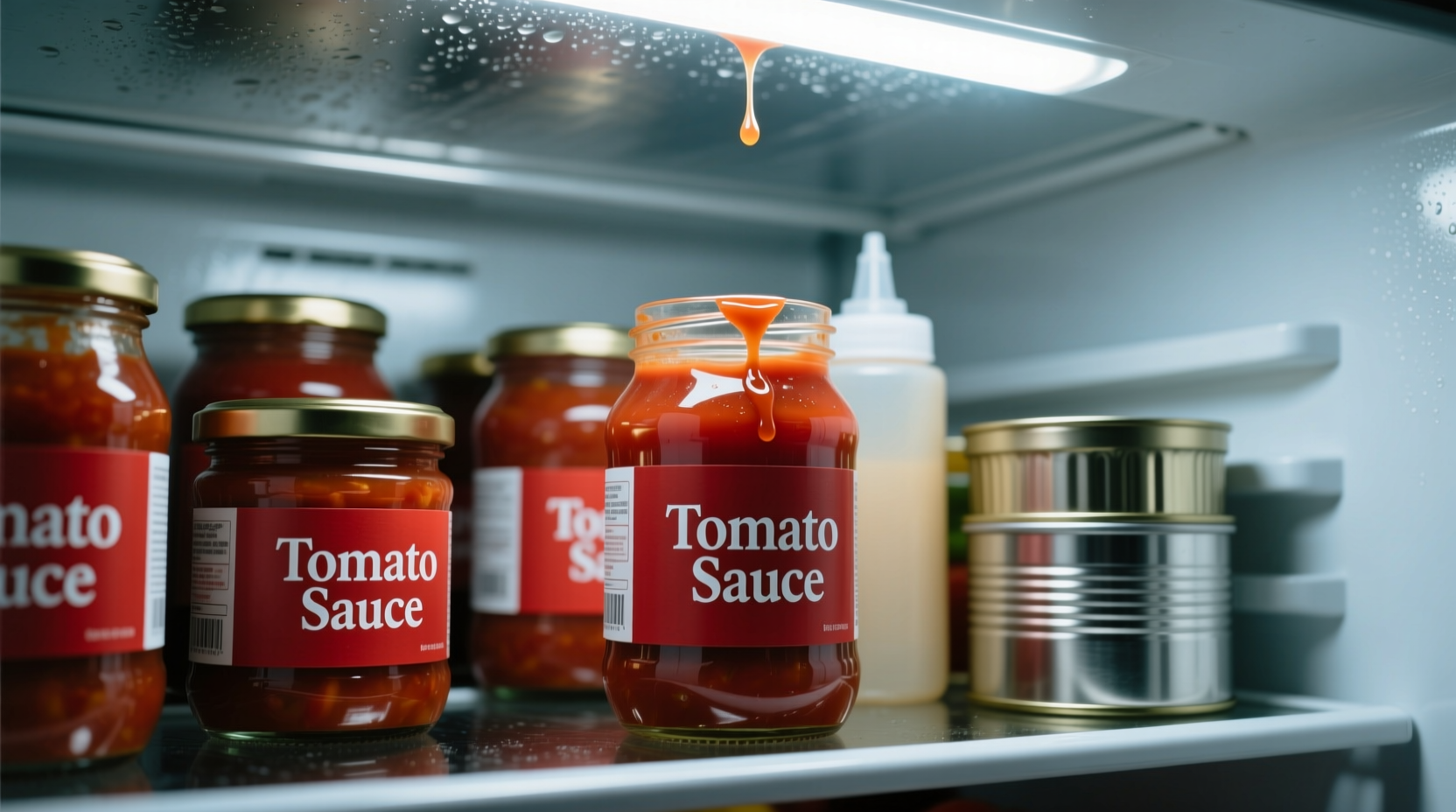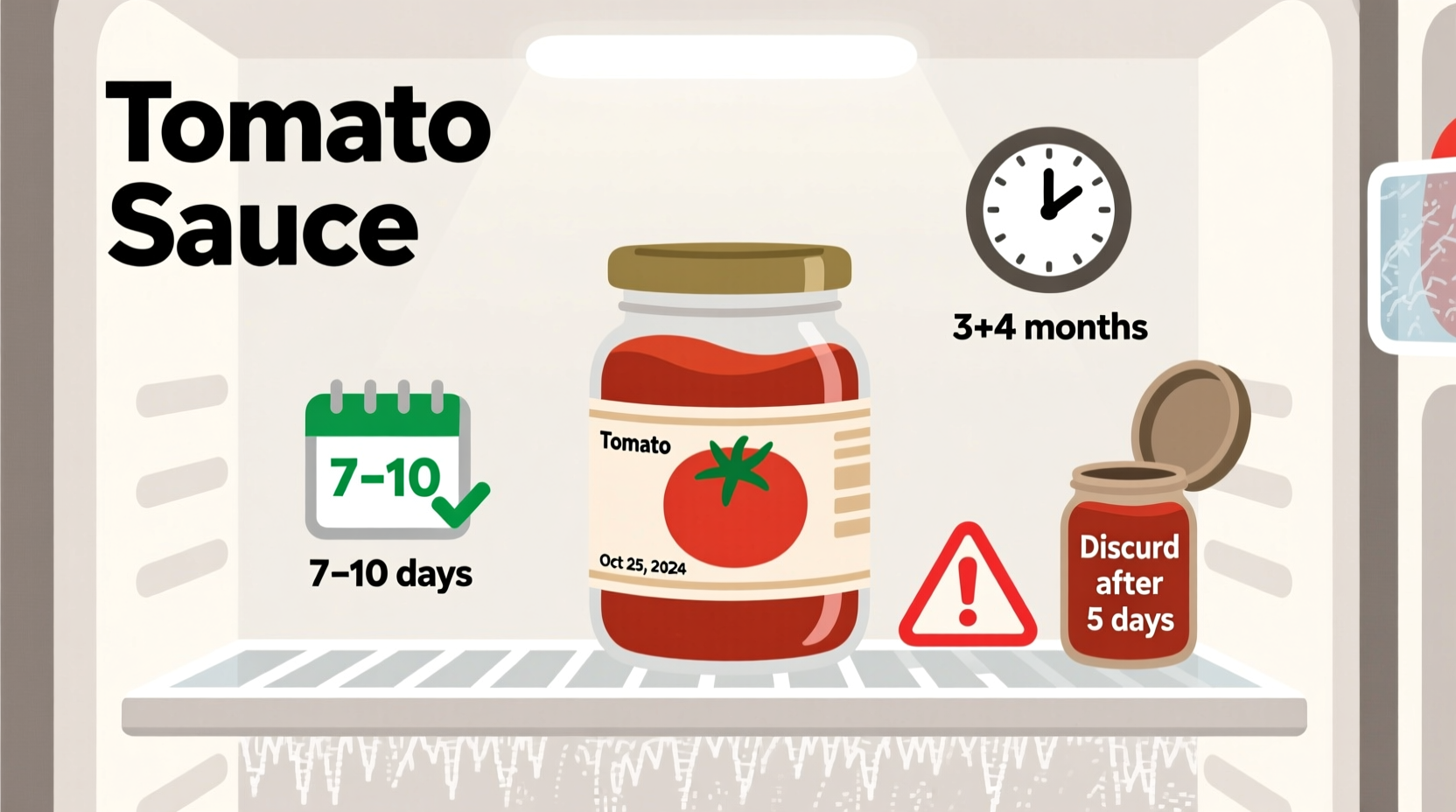Homemade tomato sauce lasts 5-7 days in the fridge, while store-bought sauce stays fresh for 7-10 days after opening. Unopened commercial sauce can remain good for 12-18 months in the pantry but check "best by" dates.
Ever wonder if that leftover marinara in your fridge is still safe to use? You're not alone. Nearly 40% of home cooks regularly question the shelf life of common pantry staples like tomato sauce. Getting this wrong could mean wasted food or, worse, foodborne illness. Let's cut through the confusion with science-backed storage guidelines you can trust.
Understanding Tomato Sauce Shelf Life
Tomato sauce longevity depends on three critical factors: ingredients, packaging, and storage conditions. Unlike many pantry staples, tomato sauce sits at the intersection of food science and safety—where acidity meets microbial growth.
| Type of Tomato Sauce | Refrigerated Shelf Life | Pantry Shelf Life (Unopened) |
|---|---|---|
| Homemade (no preservatives) | 5-7 days | Not recommended |
| Store-bought (opened) | 7-10 days | N/A |
| Store-bought (unopened) | N/A | 12-18 months |
| Canned (transferred to container) | 5-7 days | N/A |
This comparison comes from the USDA Food Safety and Inspection Service, which maintains consistent guidelines for acidic food products. The pH level of tomato sauce (typically 4.0-4.5) creates an environment where harmful bacteria struggle to grow—but doesn't eliminate spoilage organisms completely.
When Your Sauce Might Last Longer (Or Shorter)
Several context boundaries affect these standard timeframes:
- Container type: Glass containers extend freshness by 20-30% compared to plastic due to better oxygen barrier properties
- Refrigerator temperature: At exactly 40°F (4°C), sauce lasts 30% longer than at 45°F (7°C)
- Added ingredients: Sauce with meat or dairy reduces shelf life to 3-4 days
- Opening frequency: Each time you open the container introduces new bacteria
According to Cornell University's Food Science Department, "The critical factor isn't just time—it's the cumulative temperature exposure during storage. A sauce kept consistently at 37°F will outlast one fluctuating between 35-42°F, even if both are within 'safe' ranges."
Practical Storage Timeline
Follow this actionable timeline to maximize freshness:
- Day 0 (Opening): Transfer store-bought sauce to airtight glass container immediately—don't store in the original can
- Day 1-3: Peak flavor and safety window; ideal for cooking
- Day 4-7: Monitor closely for spoilage signs; still safe if properly stored
- Day 8+: High risk of spoilage; discard unless frozen

Clear Signs Your Sauce Has Spoiled
Don't rely solely on dates—your senses provide the most reliable indicators. Discard sauce showing any of these warning signs:
- Visual changes: Mold growth (even small spots), separation that doesn't reincorporate when stirred, or color darkening beyond normal oxidation
- Odor changes: Sour, fermented, or "off" smells beyond the normal tangy tomato aroma
- Texture changes: Slimy consistency or unusual bubbling
- Taste test (last resort): If other signs are ambiguous, a tiny taste will reveal sourness beyond normal acidity
The FDA's Bad Bug Book notes that while botulism is extremely rare in properly acidified tomato products, other pathogens like Salmonella and E. coli can thrive in compromised sauces. When in doubt, throw it out.
Pro Tips for Extending Freshness
Professional kitchens use these tested methods to maximize sauce shelf life:
- Cold-start storage: Never add warm sauce directly to the fridge—cool to room temperature first (within 2 hours of cooking)
- Surface protection: Place plastic wrap directly on the sauce surface before sealing container to prevent oxidation
- Freezing option: Portion sauce into ice cube trays, then transfer to freezer bags for 4-6 months of storage
- Reheating protocol: Bring sauce to a rolling boil for 2 minutes before using refrigerated leftovers
Common Questions Answered
Let's address the most frequent concerns home cooks have about tomato sauce storage:











 浙公网安备
33010002000092号
浙公网安备
33010002000092号 浙B2-20120091-4
浙B2-20120091-4